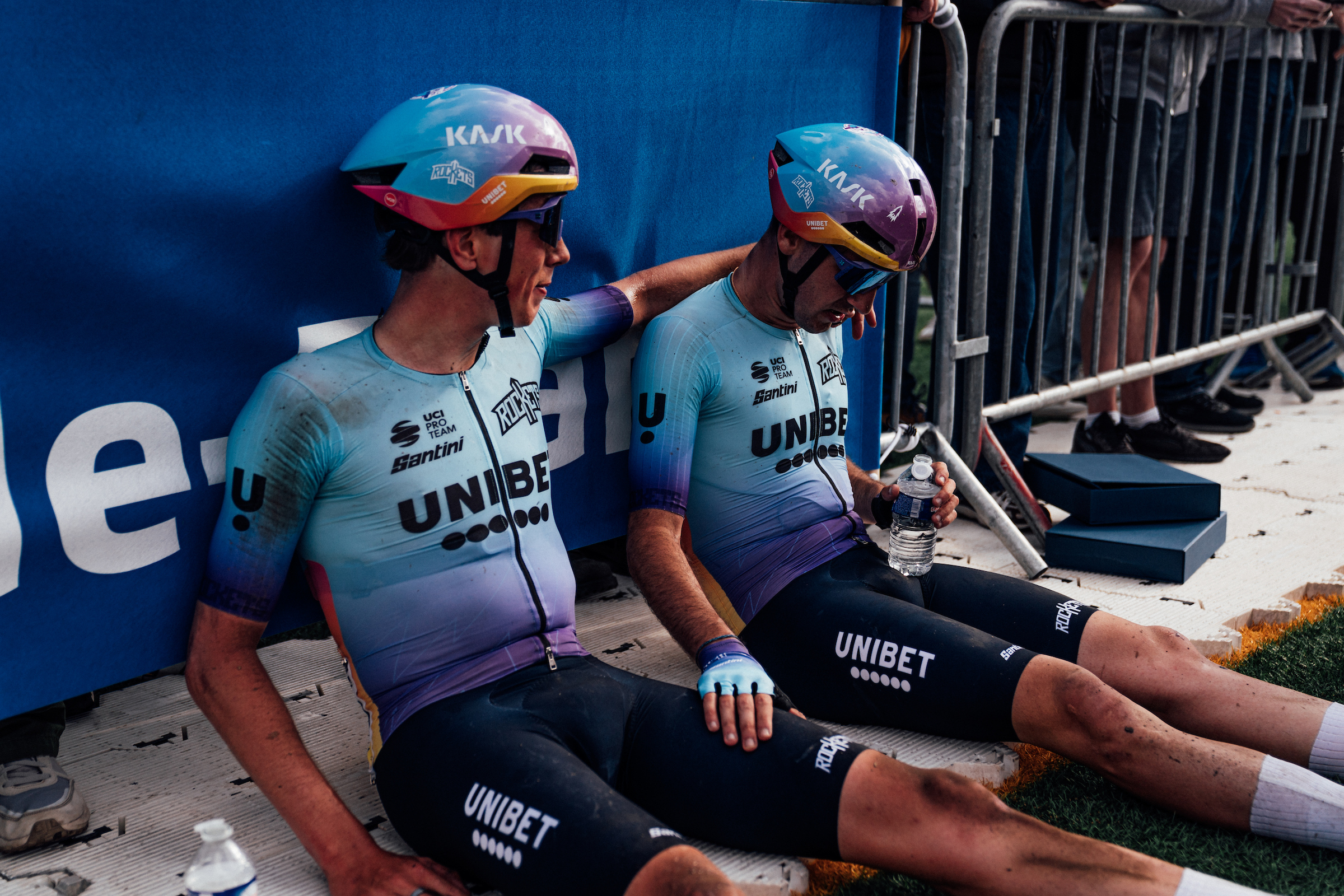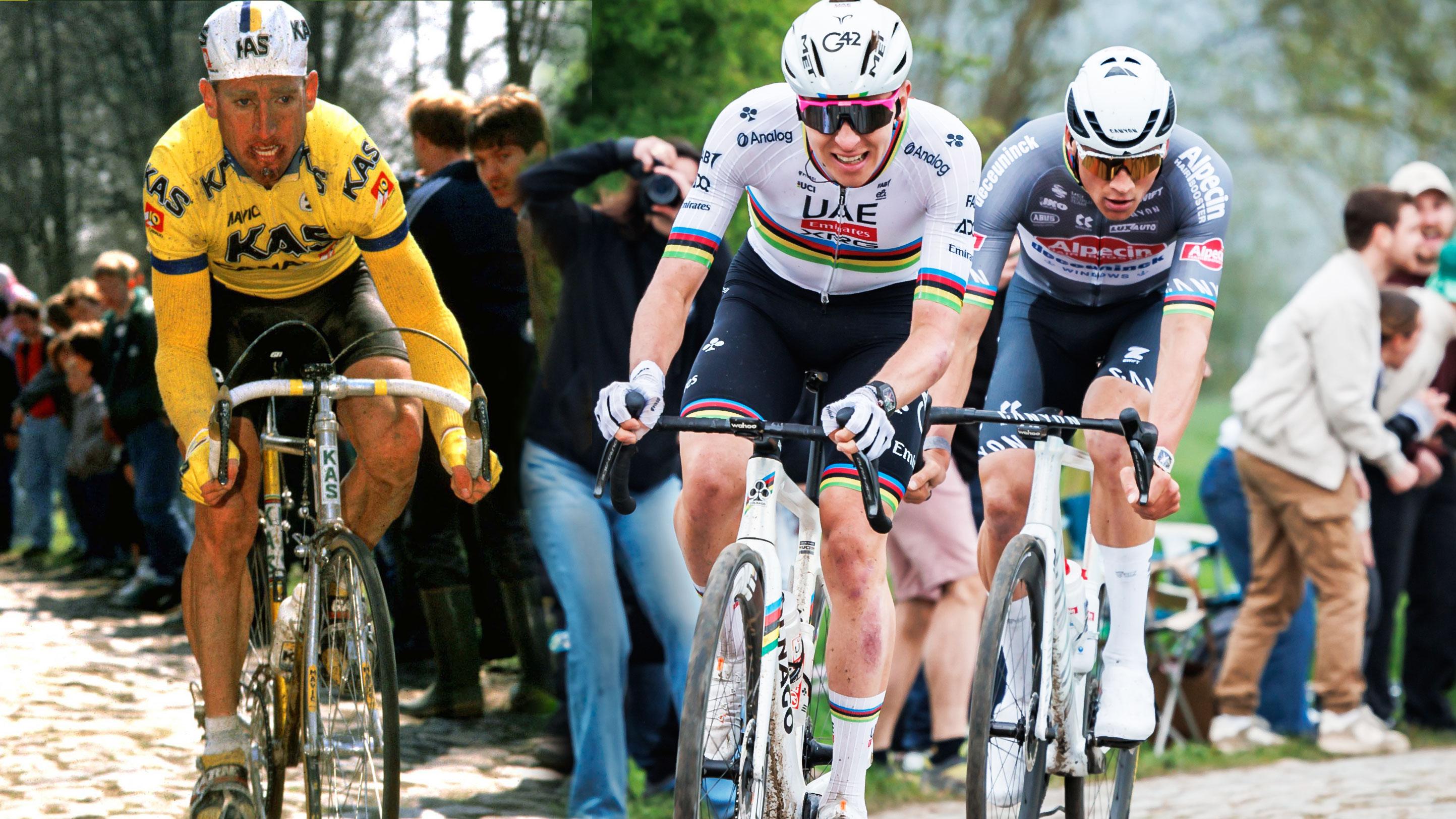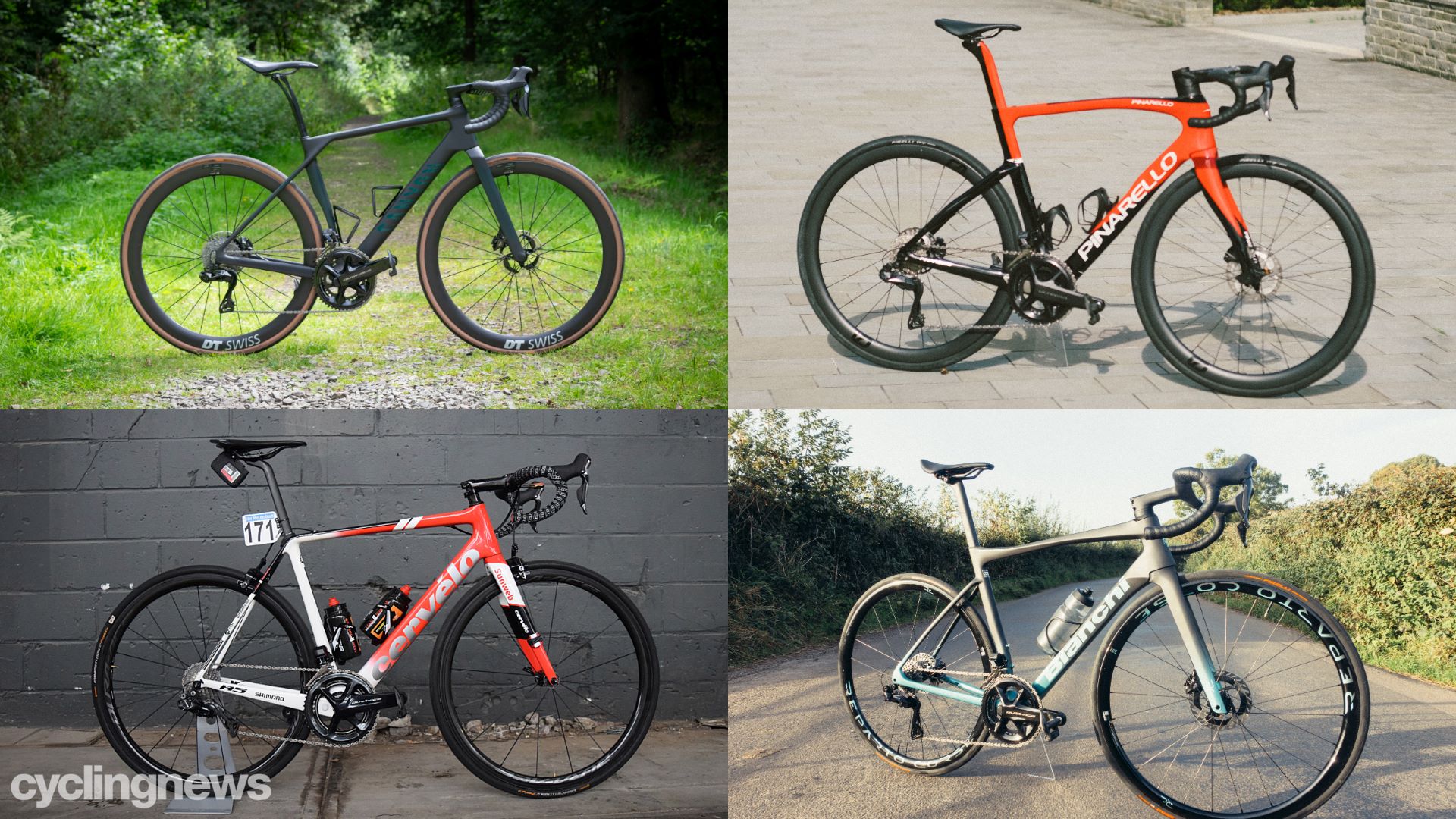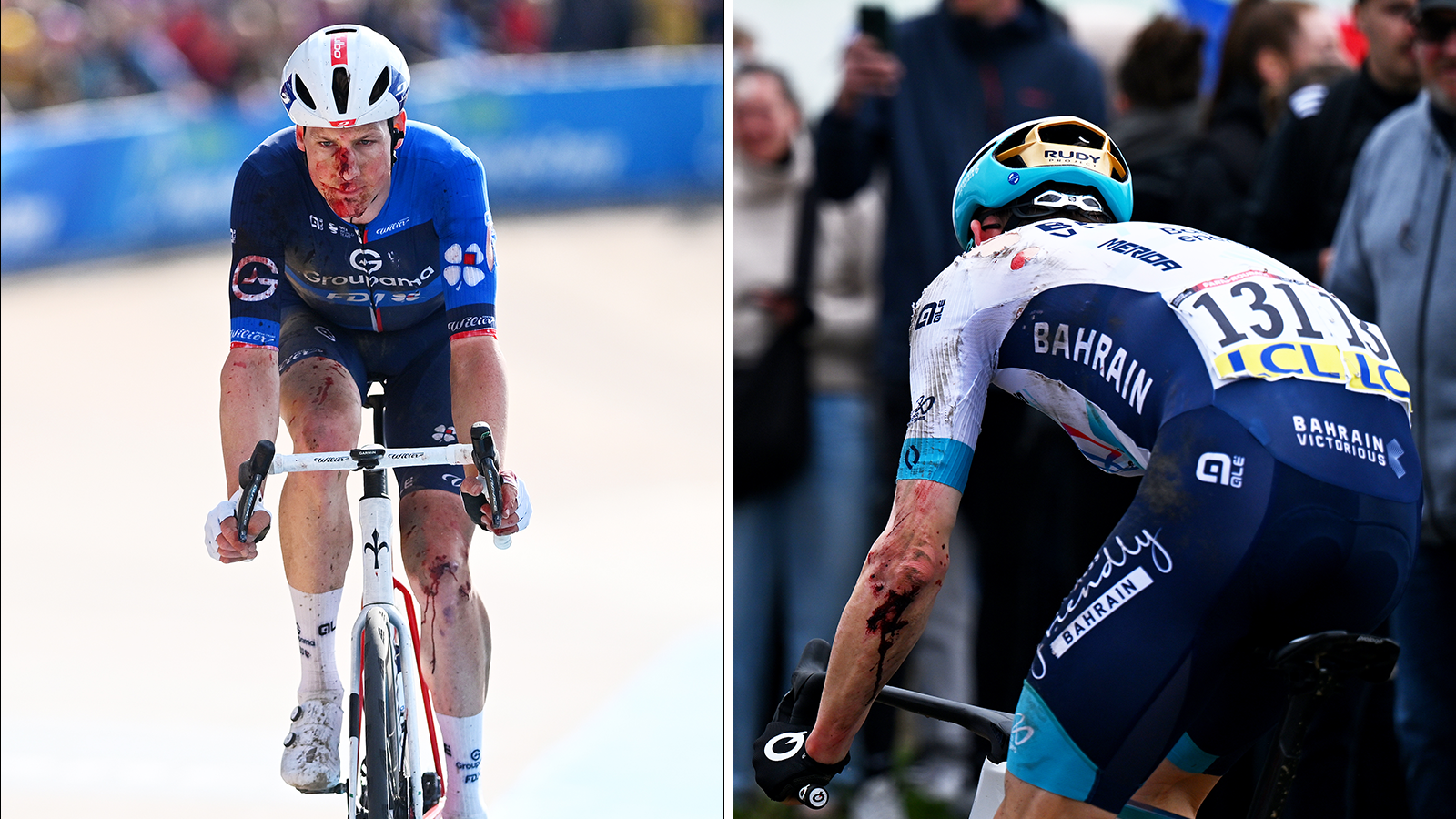Tour of Flanders 2019 race preview
Van Aert, Stybar and van der Poel lead the line of favourites
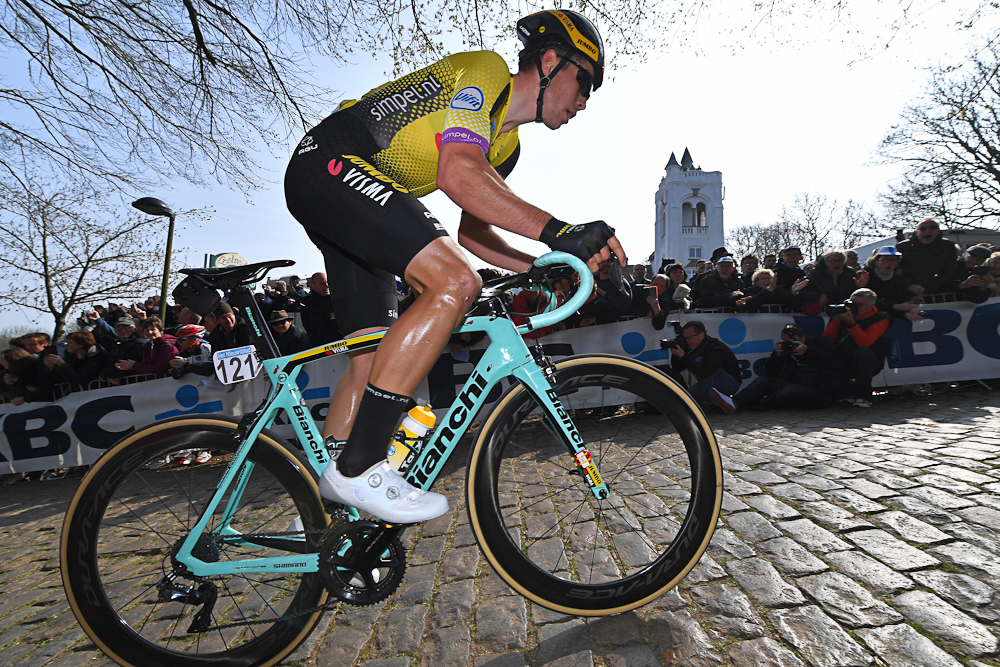
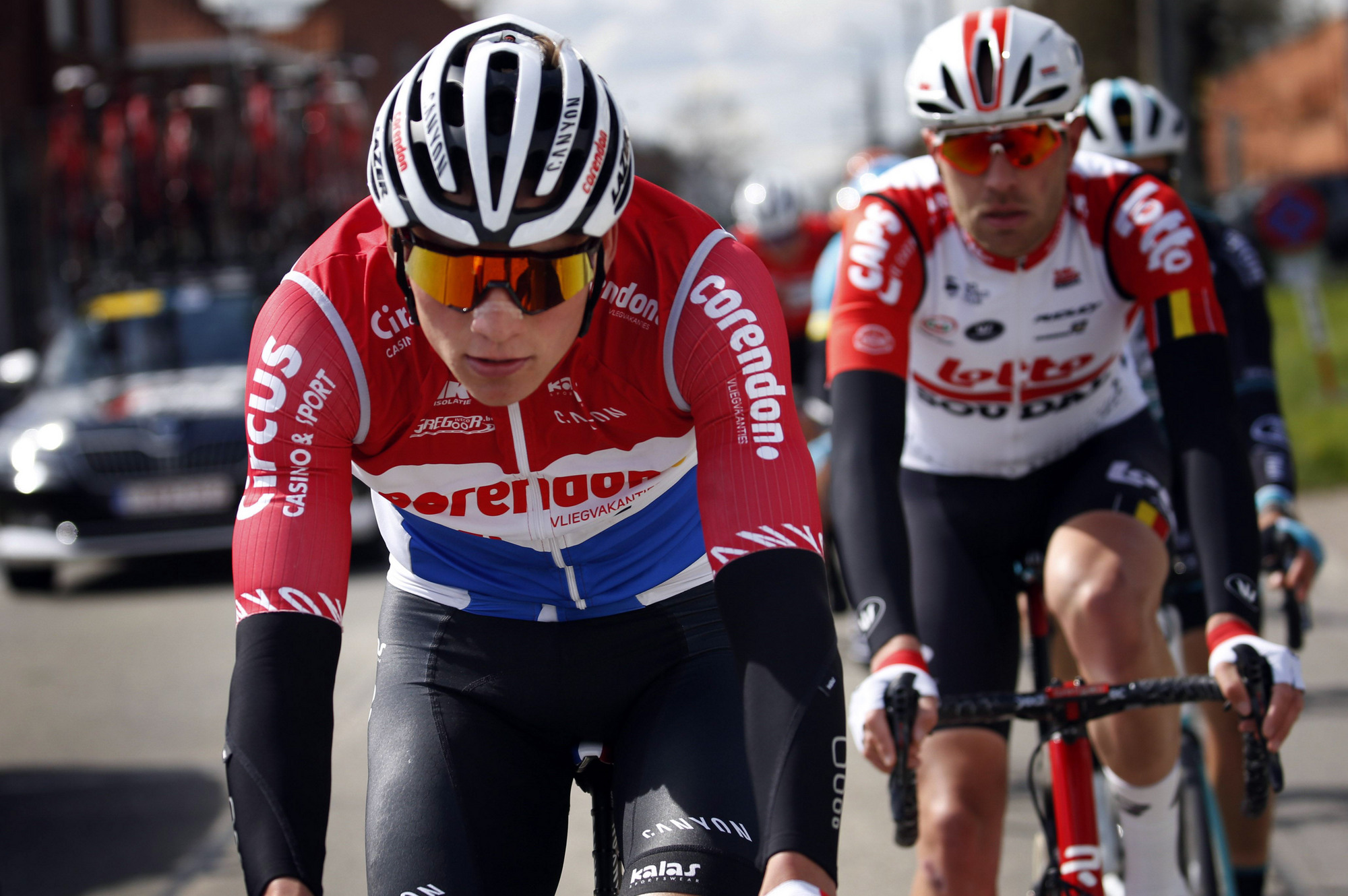
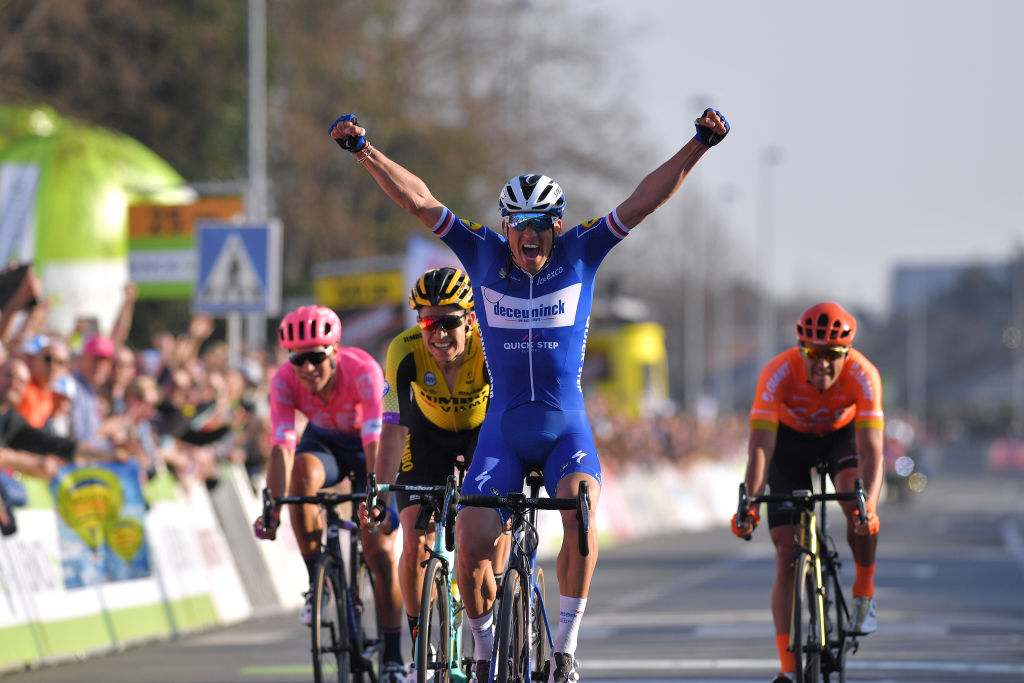
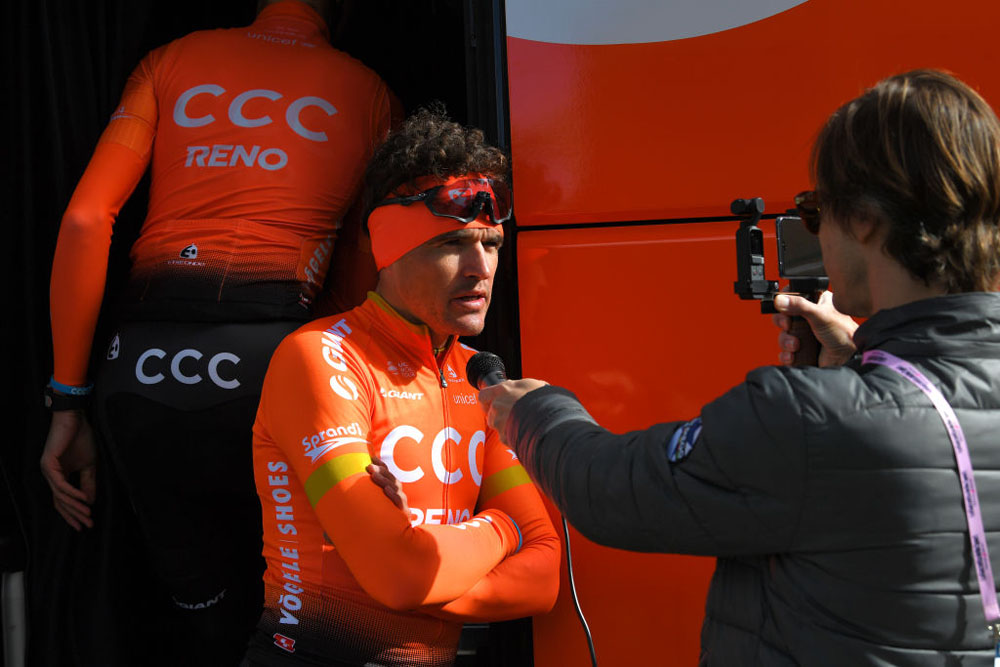
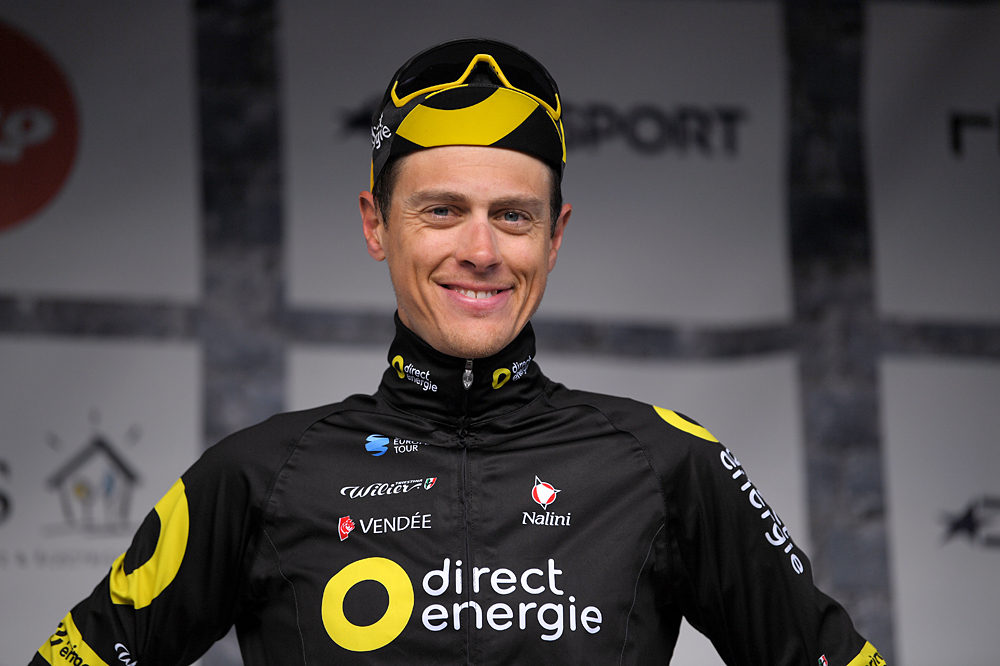
Cyclo-cross is taking over. In the favourite stakes for the 2019 Tour of Flanders, the three riders topping the market are all former world champions on the mud and knobbly tires. With some cracks in the Deceueninck-QuickStep armoury, and question marks over 2016 champion Peter Sagan, the 103rd Ronde Van Vlaanderen looks wide open.
Mathieu van der Poel became the latest cyclo-cross world champion less than two months ago but, such is the instant impact he has made on the road in his first Spring Classics campaign, he has become the most-talked about name ahead of Sunday’s race. It’s hard to think of a debutant ever having held such favourite status.
Of course, Wout Van Aert (Jumbo-Visma) already proved last year that the transition from racing in fields for an hour to the toughest day-long Classics could be made at the first time of asking. In light of Van der Poel’s sensational breakthrough, Van Aert’s achievements have been made to seem ordinary, but they’re not. The 24-year-old has taken another step forward this spring and has even surpassed Greg Van Avermaet as Belgium’s leading hope for Flanders.
Zdenek Stybar won his last cyclo-cross title in 2014 and, after several years of service in which he’s largely had to watch teammates collect the spoils, he has positioned himself at the top of the Deceuninck-QuickStep pecking order with victories at Omloop Het Nieuwsblad and E3 BinckBank.
Patrick Lefevere’s team once again start out with an unrivalled array of potential winners and thus the keys to the race, though their air of invincibility has evaporated slightly. After winning almost every major one-day race this spring, they suddenly found themselves on the back foot at Gent-Wevelgem, a sight which has invigorated their rivals. "Everyone smells the chance now,” said Trek-Segafredo’s John Degenkolb. “Before, they were, like, unbeatable, but ultimately, they aren't.”
While Van Avermaet has positioned himself slightly below Stybar and Van Aert, it’s anyone’s guess where Peter Sagan is. The three-time world champion was sick in March and a mechanical made it hard to read too much into his E3 performance, though he did spend the day attacking at Gent-Wevelgem. He has been training, not racing, this week and, if back to full fitness, will shape the tactical complexion of the race as much as QuickStep.
It was interesting that Van Avermaet named Bob Jungels (Deceuninck-QuickStep) as the third member of his trio of five-star favourites. The Luxembourger has made a huge impression in his first cobbled classics campaign and, if you thought it surprising to have not one but two debutants in contention, then don’t forget the third: world champion Alejandro Valverde.
Tom Boonen once described the Ronde Van Vlaanderen as “just another loop in Flanders”. He was being facetious, of course, and, while it’s true that we’ve seen the Oude Kwaremont, Paterberg and plenty of the other climbs in the Flemish Ardennes over the past week or so, this is the big one. It’s the Holy Week in Flemish cycling but this is the Holy Sunday.
From the crowds amassed in Antwerp’s Grote Markt for the start of the race, to the fans that spend the day roaring the riders along the hellingen and kasseien (climbs and cobbles), with the smell of beer and frits hanging in the air, there is an atmosphere and sense of occasion like no other.
The Route
The Tour of Flanders starts in Antwerp for the third time since moving from Bruges, and finishes in Oudenaarde for the eighth time since moving from Meerbeke. In between are 270.1 kilometres that will see them zig-zagging through the Flemish Ardennes, over repeated cobbled climbs
There are very few changes to the parcours of the previous couple of years. This year there are 17 hellingen, down one from last year, given the removal of the Pottelberg, which was used between the Muur van Geraardsbergen and Kanarieberg with 80km to go last year. That, however, will do little to alter the complexion of the race or take away from difficulty of it.
The opening 80 or so kilometres offer something of a preamble, on flat tarmacked roads, as the peloton makes the transition towards the hills and cobbles in the west of Flanders. An early breakaway will likely form here. A pair of cobblestone sectors – Lippenhovestraat and Paddestraat – will shake the peloton into life but they will have to wait until the 120-kilometre mark for the first of the 17 climbs.
It all kicks off with the Oude Kwaremont, which, with its vast marquee potential to house deep-pocketed and thirsty VIPs, has become the fulcrum of the Tour of Flanders. It’s long, at 2.2km and though its average gradient evens out to a modest 4 per cent, it’s variable and includes ramps in the double digits. The riders will swing off knowing they’ll have to climb it two more times later on, when things will really be serious.
The Kwaremont is followed by a series of climbs in quick succession that will begin the softening up and whittling down process, even if the decisive moves will be saved for later. Kortekeer is followed by new introduction Ladeuze, and the Wolvengerg, before the Haghoek cobblestone sector leads into the Leberg climb. Berendries and Tenbosse follow in quick succession, ahead of the famous Muur van Geraardsbergen. Once the centrepiece of the Flanders route, paired with the Bosberg in the old finale, it made its return in 2017. Though positioned 100km from the finish, we saw two years ago what impact the iconic climb to the chapel can still have, as the move from which Philippe Gilbert soloed to victory was formed on those double-digit gradients.
After the Muur, though, there’s something of a respite when it comes to the climbing. With no Pottelberg, there is no categorised climb for 27km, until the Kanarieberg comes along with 72km to go. After that, it’s back up the Oude Kwaremont, and this time the riders will swing off and come round to take on the fearsome Pateberg, a viciously steep, straight cobbled track though farmland. Though just 360m long, it’s relentless 13 per cent gradient will quickly find out any weak legs.
There’s no let-up now as the race enters its final 50 kilometres. Koppenberg – almost as steep as Paterberg but with much rougher cobbles – comes next, followed by Steenbekdries, Taaienberg – or Boonenberg as it’s affectionately known. Then it’s the Kruisberg and Hotond, which have essentially been joined together to form the longest climb of the day at 2.5km. That leaves just a final ascent of the Oude Kwaremont and Paterberg. The riders swing left off Paterberg, descending on narrow lanes before hitting the wider flat roads on the 13-kilometre run-in to Oudenaarde.
The Contenders
After his victory at Dwars Door Vlaanderen and fourth place at Gent-Wevelgem, Van der Poel is the favourite in the eyes of many, despite all received wisdom about the experience needed to win Flanders. Flanders is 90 kilometres longer than Dwars, but the Dutchman showed no sign of fatigue over 250km at Gent-Wevelgem. A rasping sprint at Dwars will make everyone fearful of having him for company on the run-in to Oudenaarde, though he has shown emphatically over the past couple of weeks that he’s not one to wait around. Even if he can’t pull it off, expect him to go down swinging.
Stybar finds himself at the top of the QuickStep ladder and looks in the form of his life. As ever, though, any QuickStep victory is influenced just as much by the collective. Stybar’s E3 victory was effectively handed to him on a plate by Jungels, who, after winning Kuurne-Brussel-Kuurne and finishing third at Dwars, is seen by some as on a par with Stybar. Behind them are Yves Lampaert, who hasn’t been as prominent as last year, and Philippe Gilbert, who abandoned Dwars with stomach problems. As such, the favourite for Flanders might not be a specific QuickStep rider, but rather any QuickStep rider. However, as Degenkolb noted, they can be vulnerable if not allowed to dictate, and many teams will be hoping to repeat the Gent-Wevelgem blueprint of attacking early with numbers.
Van Aert’s Jumbo-Visma team, which includes Mike Teunissen, led the way in that respect at Gent-Wevelgem, and Van Aert is having a storming run at the Classics, with 3rd at Strade Bianche, 6th at Milan-San Remo, and 2nd at E3. This is the first time since World War II that no Belgian rider has won a spring classic ahead of Flanders, and Van Aert is seen by the home nation as their best shot on Sunday.
Van Aert takes the burden from Van Avermaet, whose quest for the glaring gap in his spring palmares continues after three podium finishes and three further top 10’s. He has downplayed his status somewhat, but he’s still the second-highest profile name on the start line, was third place at E3, which is widely considered a dress rehearsal for Flanders. He might have been picked off by a fresher Stybar in the sprint, but his stringing acceleration on the Tiegemberg didn’t lie.
Peter Sagan couldn’t follow that attack on the Tiegemeberg, though it was later revealed he had suffered a mechanical. Asked whether that was the cause, or whether he was still not 100 per cent after falling ill ahead of Tirreno, he said: “A bit of both”. Sagan couldn’t sprint at the end of Gent-Wevelgem but that’s because he spent 180km off the front, so it’s difficult to accurately assess his shape. The three-time world champion, though, is one of the few riders who can win Flanders even when not at his very best.
Oliver Naesen has been widely talked up over the past week or so, with podiums at Milan-San Remo and Gent-Wevelgem, but there’s a question mark over his shape after he revealed he’s suffering with bronchitis. Another Belgian hope is Tiesj Benoot (Lotto Soudal), who was fifth on his Ronde debut four years ago and was in the winning selection at Dwars. He lines up alongside Tim Wellens, who’s usually found in the south of Belgium but has looked promising every time he’s ridden the cobbles.
If we haven’t mentioned the defending champion, Niki Terpstra yet, that’s because he’s had a quiet week or so, despite looking lively in the opening races at the start of March. Though clearly not on the level of QuickStep, his new Direct Energie team have shown themselves capable of providing support. The Dutchman has the pedigree but hasn’t looked on the same rarefied level as last year.
Trek-Segafredo have options, and have seemingly turned things around after a disastrous start to the Classics. Jasper Stuyven, John Degenkolb, Mads Pedersen, and Edward Theuns finally combined well at Gent-Wevelgem and will be hoping for more of the same. Team Sky line up with Luke Rowe, who has been impressive this season and has never quite reached his potential in these races, and Gianni Moscon, who looks some way short of his best.
Dimension Data are in a similar position but haven’t yet turned things round, though Michael Valgren and Edvald Boasson Hagen are more hopeful after a solid ride at Dwars.
2015 winner Alexander Kristoff’s prospects have shot up after his Gent-Wevelgem victory, though the way he had to attack ahead of the Kemmelberg makes you wonder if he can emerge with the best in a race where the climbs have a much bigger say. Sep Vanmarcke will probably ride but his knee injury means his hopes are slim, and EF will instead be led by Alberto Bettiol, who was fourth at E3.
There’s a lot of excitement around Valverde (Movistar), who was so impressive at Dwars last year but delayed his Flanders debut until this year. The 38-year-old had a quiet Volta a Catalunya by his standards – he won the two previous editions – but as a Movistar director told us, “Alejandro is always in form.” Another debutant to look out for is Michael Matthews (Sunweb), who bounced back from a brutal Paris-Nice crash and concussion to win two stages in Catalunya.
Elsewhere, Matteo Trentin has ridden well for Mitchelton-Scott, while Matej Mohoric has caught the eye with aggressive riding for Bahrain-Merida.
Get The Leadout Newsletter
The latest race content, interviews, features, reviews and expert buying guides, direct to your inbox!
Patrick is a freelance sports writer and editor. He’s an NCTJ-accredited journalist with a bachelor’s degree in modern languages (French and Spanish). Patrick worked full-time at Cyclingnews for eight years between 2015 and 2023, latterly as Deputy Editor.
Latest on Cyclingnews
-
For the love of Paris-Roubaix – Girmay, Dygert and every Hell of the North finisher emotional after making it to the velodrome
'I have pain everywhere but it's a beautiful race' says Biniam Girmay as he achieves best-ever finish for an African male rider -
Sean Kelly's Classics Column: Only a mistake cost Tadej Pogačar in Paris-Roubaix – he'll be back to win soon
The nine-time Monument winner reflects on Van der Poel's win, a costly mistake from Pogačar, and what Ferrand-Prévot's win means for the rest of the season -
Best bike brands: Bicycle companies we trust
The bike brands we rate highly at Cyclingnews and a guide to available marques -
Paris-Roubaix medical updates – From fractures for Ballerini and a bloodied face for Küng to lucky escapes for Theuns and Ferguson
The accumulating injury reports from a brutal weekend of racing at the Hell of the North

